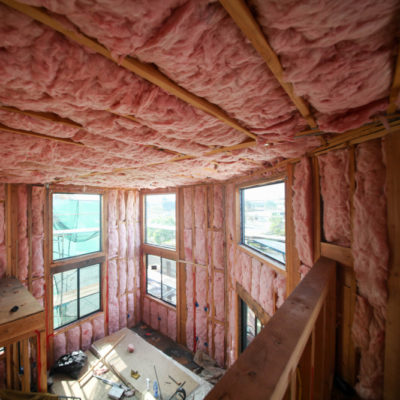Fiberglass Insulation
Fiberglass – which consists of extremely fine glass fibers – is an insulation material that is found in most homes.
It is commonly used in two different types of insulation, which are batts and rolls, and loose-fill. It is also available as rigid boards and duct insulation.
Fiberglass can be placed in unfinished walls, floors, and ceilings. It is fitted between studs, joists, and beams.
Fiberglass is made to slow the spread of heat and cold in both residential and commercial insulation projects.
How Fiberglass Works
Fiberglass as an insulator slows the spread of heat, cold, and sound in structures.
The material does this by trapping pockets of air, keeping rooms warm in the winter and cooler in the summer, according to the International Association of Certified Home Inspectors (InterNACHI).
Limiting the amount of air coming into and leaking from a home can work to make a home comfortable. It’s important to note that fiberglass limits the air movement, but doesn’t stop it completely.

Energy Efficient
On average, fiberglass insulation can help reduce heating and cooling bills by 40% to 50%. In addition to energy savings, fiberglass insulation can also help with noise reduction.
Fire Retardant
Made from recycled glass and sand, fiberglass is a natural fire retardant that poses little to no fire hazard. There’s also fiberglass material that’s treated with a fire retardant to improve the level of safety.
Noise Cancelling
Fiberglass has natural sound-dampening properties that can significantly reduce noise coming into the house. Also known as acoustic insulation, fiberglass is used in walls, ceilings and even ducts to help reduce sound transfer.

Hours
Monday 8 AM – 4 PM
Tuesday 8 AM – 4 PM
Wednesday 8 AM – 4 PM
Thursday 8 AM – 4 PM
Friday 8 AM – 4 PM
